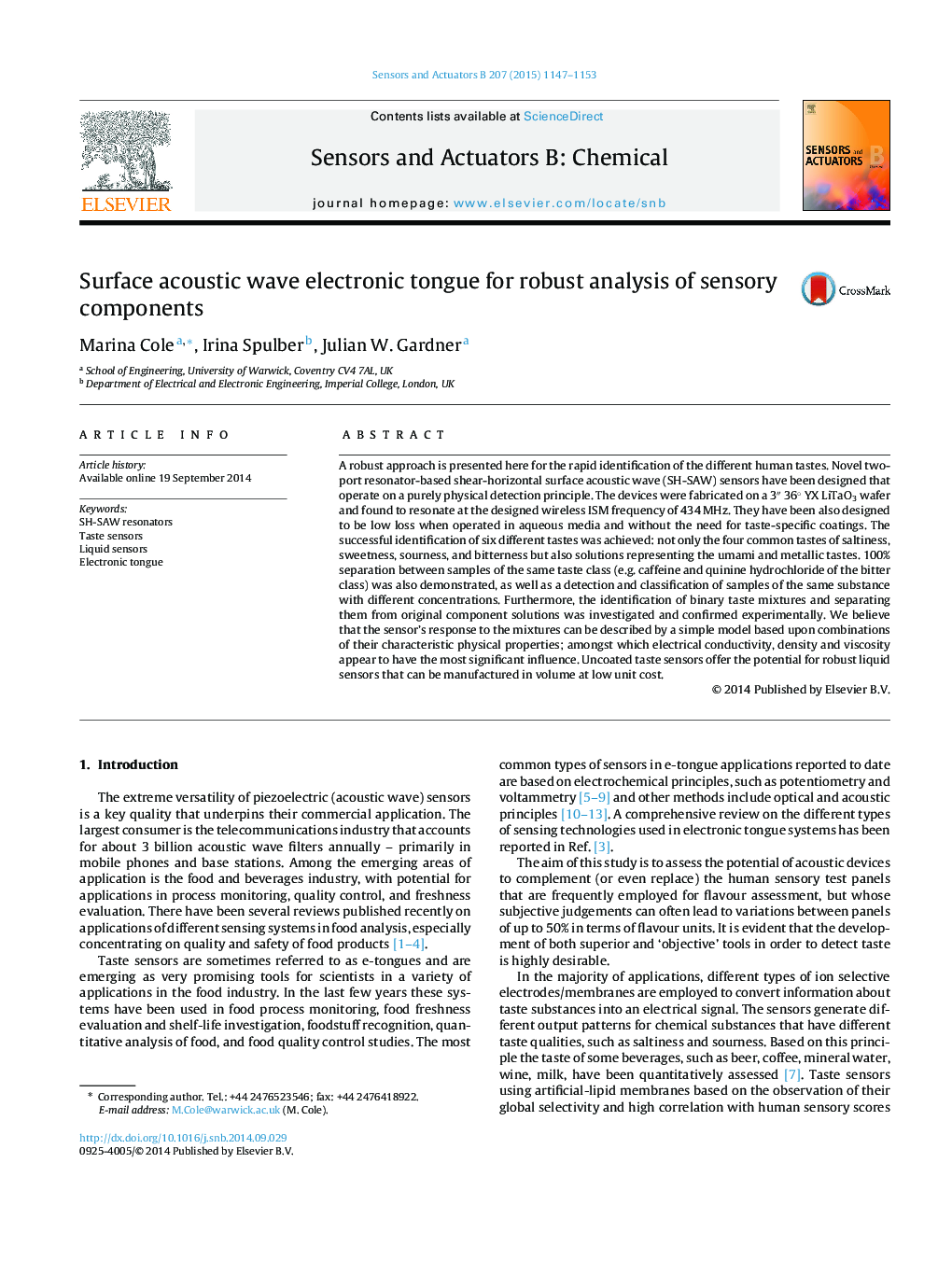| کد مقاله | کد نشریه | سال انتشار | مقاله انگلیسی | نسخه تمام متن |
|---|---|---|---|---|
| 742538 | 894315 | 2015 | 7 صفحه PDF | دانلود رایگان |
• Indirect measurement of tastes using piezoelectric sensors without selective layers.
• 100% discrimination of six tastes: salty, sweet, sour, bitter, umami and metallic.
• 100% separation between samples of the same taste class (e.g. of the bitter class).
• Identification of binary mixtures and separation from original component solutions.
• Classification of samples of the same taste substance with different concentrations.
A robust approach is presented here for the rapid identification of the different human tastes. Novel two-port resonator-based shear-horizontal surface acoustic wave (SH-SAW) sensors have been designed that operate on a purely physical detection principle. The devices were fabricated on a 3″ 36° YX LiTaO3 wafer and found to resonate at the designed wireless ISM frequency of 434 MHz. They have been also designed to be low loss when operated in aqueous media and without the need for taste-specific coatings. The successful identification of six different tastes was achieved: not only the four common tastes of saltiness, sweetness, sourness, and bitterness but also solutions representing the umami and metallic tastes. 100% separation between samples of the same taste class (e.g. caffeine and quinine hydrochloride of the bitter class) was also demonstrated, as well as a detection and classification of samples of the same substance with different concentrations. Furthermore, the identification of binary taste mixtures and separating them from original component solutions was investigated and confirmed experimentally. We believe that the sensor's response to the mixtures can be described by a simple model based upon combinations of their characteristic physical properties; amongst which electrical conductivity, density and viscosity appear to have the most significant influence. Uncoated taste sensors offer the potential for robust liquid sensors that can be manufactured in volume at low unit cost.
Figure optionsDownload as PowerPoint slide
Journal: Sensors and Actuators B: Chemical - Volume 207, Part B, February 2015, Pages 1147–1153
